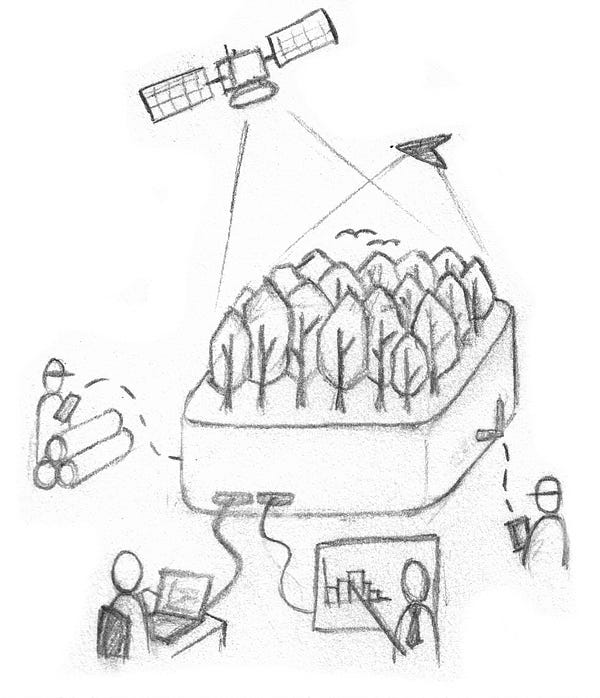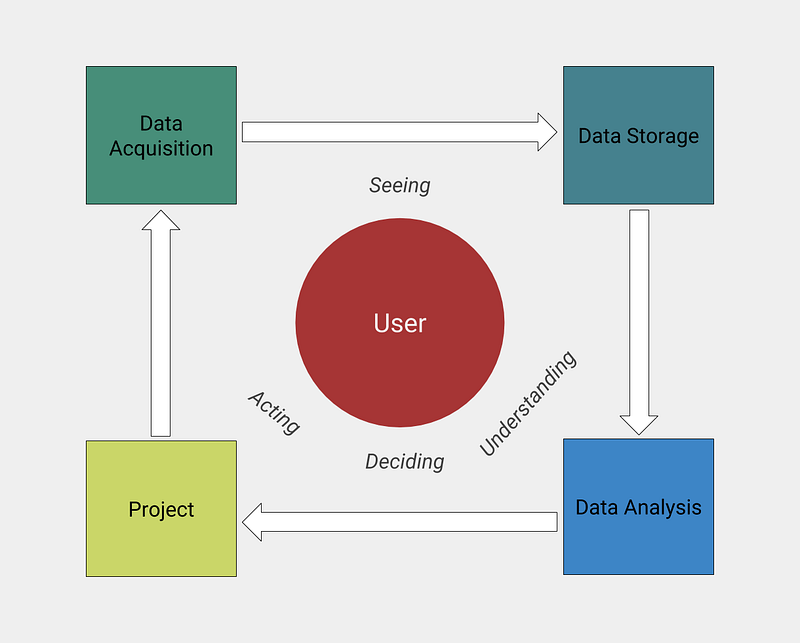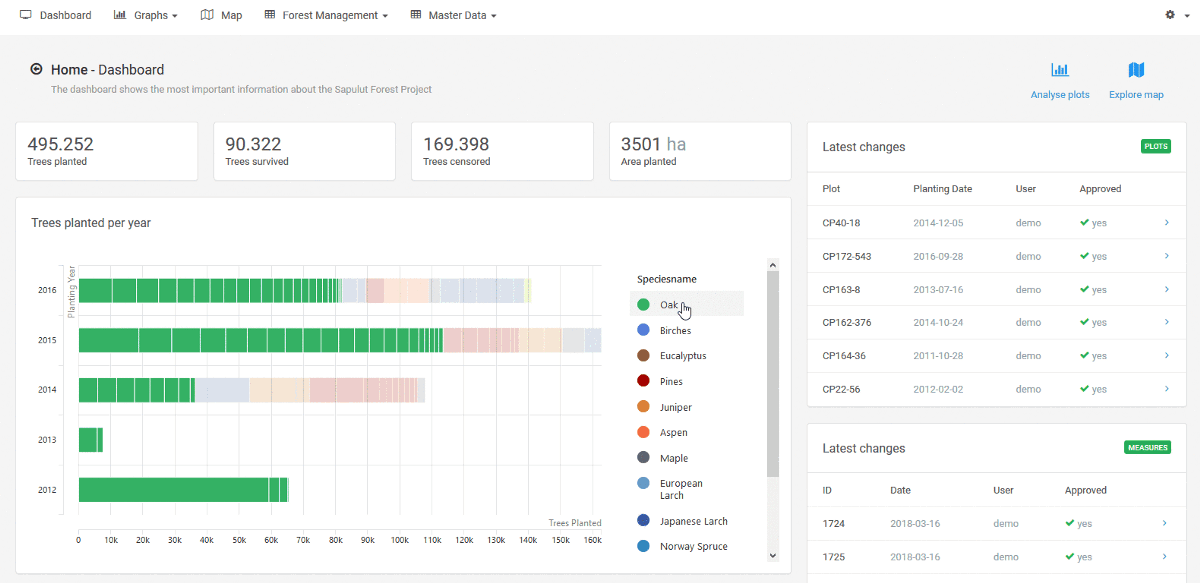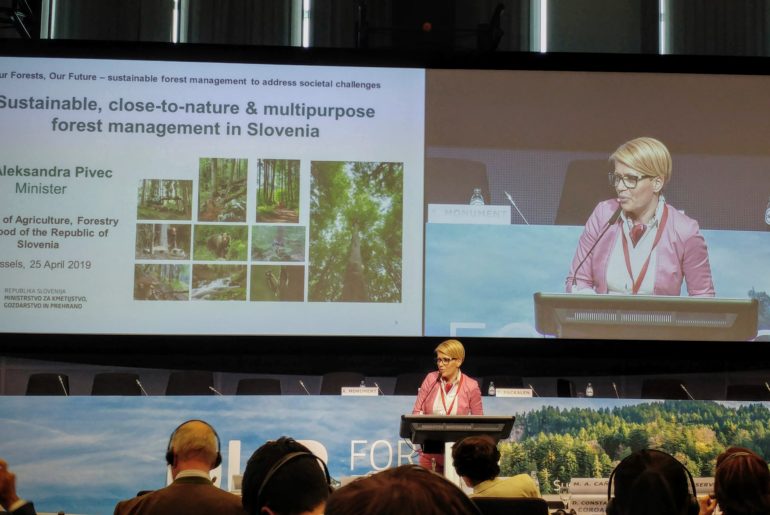Costly missteps can be avoided by gaining a basic understanding of application development processes and design principles.
Why are information systems needed?
Thousands of forest operations and forest landscape projects run successfully using Excel files and Word documents. But there is the point when organizations grow, complexity increases exponentially, and the information management gets stuck in chaos.
Complexity usually is caused by accumulating large amounts of data, increasing numbers of data types, decentralized and inaccessible data storages, and a growing number of data users.
The downside of a missing centralized Forest Information System are inconsistencies of the data set (e. g. false, incomplete, redundant data), data silos which cannot be queried or analyzed, and non-existence of a user rights system defining user roles with specific data access and editing permissions.
When friction cost for data management exceeds a reasonable level, decision-makers should start to consider more powerful information management systems.
The Forest Information System
In the following, when using the terms database, software and application we refer always to the Forest Information System.
Technically, a Forest Information System comprehends the process of data acquisition, storage of the data in a centralized and accessible database, and access to the data through various applications to analyze it.

A modern Forest Information System is capable of managing various data types like satellite and drone imagery, forest stand maps, management measures, financial information, and various other data like tree inventory data from field surveys.
The obtained information is used for different applications like
- forest management planning,
- yield predictions,
- reporting and controlling,
- risk management and assets valuation,
- documentation and presentation.
The Forest Information System is designed to support the user to see and understand the forest project status and help him to decide and act based on accurate information. A constant information feedback loop on the effects of the management iteratively improves management results. The following figure outlines how the information flow of a Forest Information System is built into the decision-making process.

Reasons for and against off-the-shelf Forest Information Systems
Some off-the-shelf Forest Information Systems are affordable and allow a fast commissioning. Especially for new projects without an existing data structure these solutions should be evaluated.
A drawback of these preconfigured solutions is that they cover just a standard data management case. Though, every project has a different and very specific business logic which can not be fully supported with these applications.
For many cases the “one-size-fits-all” approach has major disadvantages which are:
- Forcing the user to adapt his business logic to the given logic of the software architecture.
- Overwhelming and confusing number of functionalities of which the user only needs a few.
- Essential functionalities are missing.
- Limited flexibly to adapt to the specific and continuously changing needs of the project.
The modular framework approach
In comparison to off-the-shelf-solutions, the development of software applications from scratch is very cost and time intensive and can only be accomplished by organizations with a certain financial leeway.
But where to find the ideal solution between off-the-shelf-applications and development from scratch?
Today, the available modular software frameworks provide an ideal solution for a rapid as well as a customized implementation of a Forest Information System. It uses an existing software framework that already includes modules with basic functionalities like
- user registration and user roles,
- flexible geodatabase,
- various modules e. g. for mapping, management planning, forest inventory,
- data import and export interface.
Such a framework can be customized to fulfill the specific business logic of the project. Already during the first days of usage, an initial version of a Forest Information System (Minimum Viable Product) can become operational and provide an early value.
Lessons learned while using it can be directly incorporated into the ongoing development. This built-in flexibility enables to continuously and organically adapted to the changing information demands of organizations.
Design principles for the development of a customized Forest Information System
The following basic design principles help to guide the process of the establishment of a flexible as well as cost-efficient Forest Information System that precisely serves the needs of the decision makers.
1. Principle: Build a data infrastructure that supports the information flow.
Form follows function. The design of a fluid information system requires the careful analysis of the current business workflow, the identification of the user needs and the fields where the application adds significant value to the business process. The data model needs to be designed in a way, that the data flow follows the business information requirements.
2. Principle: Find a balance between the number of features and usability.
It is attempting to integrate as many features as possible into a database application. However, this comes at the cost of a reduced usability and increased time for training on the software. Therefore, it is needed to prioritize features and only integrate as many features as absolutely necessary.
3. Principle: A modular approach for organic growth.
Projects often start small but might grow bigger over time and integrate more complexity in their activities and services. Your software application should reflect this and be as dynamic and flexible as your ongoing business requirements.
In order to maintain a continuous flexibility within growing database applications, modern software applications are modular. Independent building blocks can be compiled, substituted, supplemented and rearranged.
The communication between these building blocks, also called modules, is enabled by Application Programming Interfaces (APIs). These APIs allow a standardized communication between the modules and reduce the overall complexity. Further, they allow the possible integration with third-party applications.
4. Principle: Iterative implementation.
The ability to predict the future is almost impossible in a complex and dynamic world. The same is true for scheduling the implementation of long feature lists within the software development process.
Acknowledging this, today’s software development follows an iterative implementation approach. Its goal is the early deployment of an operational application version. This leads to fast results and allows to determine the added value in practice. Short iterations of the development cycle ensure that the application evolves gradually while aligning closely with user needs which might change over the course of the development.
5. Principle: User-stories instead of feature lists.
Acknowledging the requirement for a flexible implementation process, features are formulated today as user-stories.
A user-story describes the expected output and not a detailed feature description. User-stories, therefore, allow a certain flexibility on how the programmer achieves the defined goals. Giving more autonomy to the programmer is a measure to incentivize creativity and motivation and accelerate the development process. The following example shows how a user-story is formulated:
User-story: As a forest manager (user) I want to record geolocalized forest inventory data.
Acceptance criteria:
- offline mobile data collection under rugged conditions
- collection of tree position, height, and diameter
- automated synchronization of data with a centralized database when an internet connection is available
6. Principle: Open data standards.
Software applications develop fast during these days. Therefore, when developing a Forest Information System make sure that “the heart” — your valuable data — is stored in open data standards and database formats which allow an uncomplicated migration between various applications.
Conclusion: What a Forest Information System should be!
Modern database applications are
- designed as simple as possible
- web-based,
- accessible,
- modular,
- flexible,
- use open data standards to prevent vendor lock-in, and
- should be able to evolve continuously.




